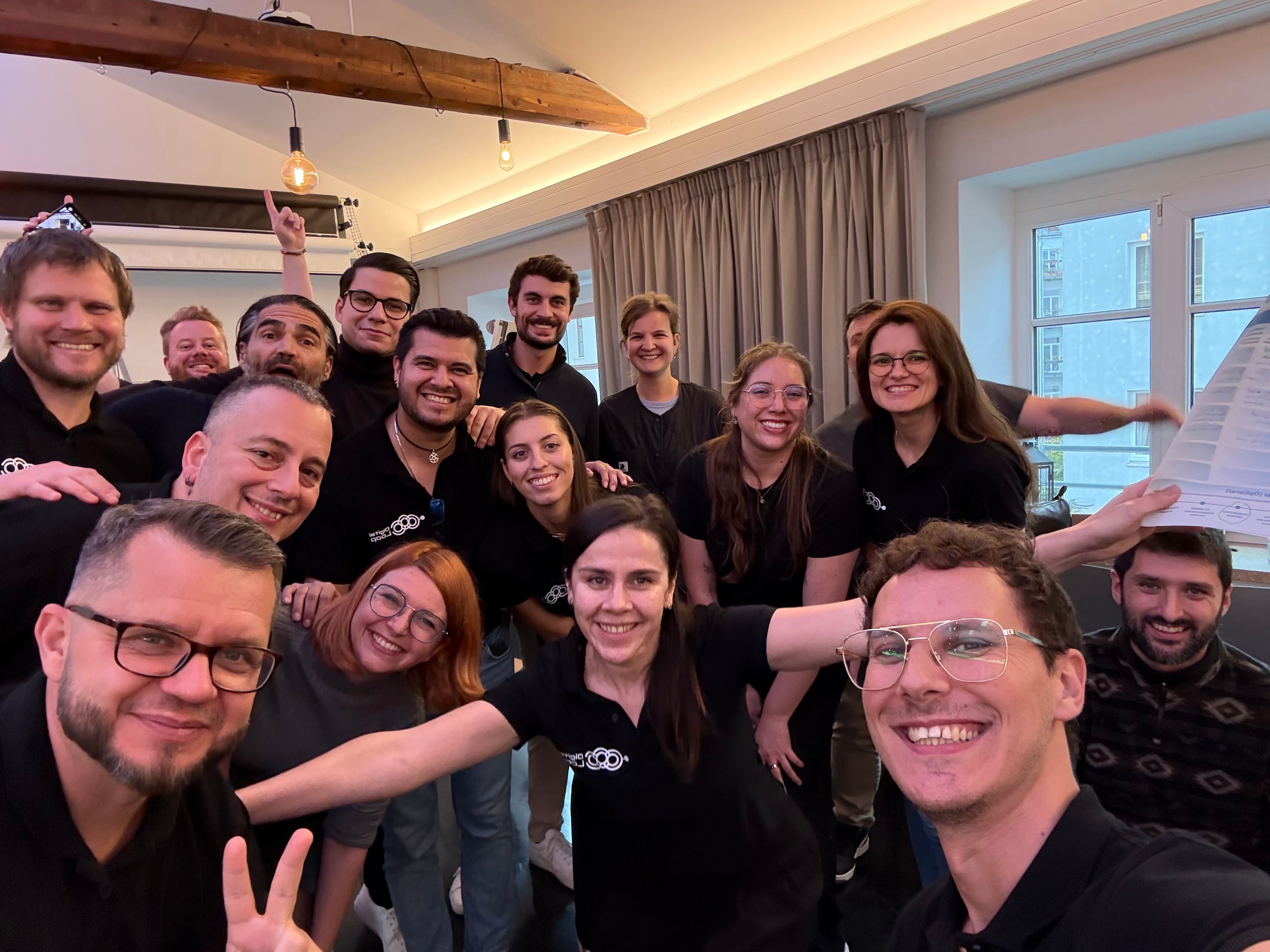Welcome back to our SEO competitor analysis blog series. In the first part, we talked about why competitor analysis is necessary and how you can get started. In the second part, we dived deep and showed how you can conduct a content analysis on your competitor’s website. But you guessed it right, we have not talked about the technical aspects yet.
In this third installment, we are going to cover how you can analyze your competitors from a technical perspective, such as Core Web Vitals (CWV), website speed, crawlability, HTTP response code, schema markup, etc.
Core Web Vitals
Optimizing Core Web Vitals (CWV) is significant not only for the search engines but also for the visitors. In April 2023, Google simplified the influence of page experience signals in the overall search engine ranking. According to them, CWV is an important ranking factor, but improving 1-2 metrics does not guarantee a better ranking in the SERPs for a particular page. Instead, they improve the overall user experience and push your websites to Google’s sweet spot. After all, it is no secret that user experience and helpful content are going to be Google's top priority in 2026.
Google now has three core web vitals: Largest Contentful Paint (LCP), Interaction to Next Paint (INP), and Cumulative Layout Shift (CLS).
- Largest Contentful Paint (LCP): It measures how fast the largest element of your page loads. Ideally, it should be loaded within 2.5 seconds or less (75th percentile): this means that out of every 100 user experiences, in at least 75 cases, the loading time needs to be 2.5 seconds or below. If competitors' websites take more than 4 seconds to load the largest element, then we can address that as poor performance. Between 2.5 and 4 seconds is a grey area, which is not poor but still needs improvement.

- Interaction to Next Paint (INP): In March 2024, Google replaced First Input Delay (FID) with Interaction to Next Paint (INP). Previously, FID only measured the time difference between the user's first input and browser response time. Instead, INP now improves this limitation and covers the latency of all user interactions (clicks, taps, keyboard inputs) throughout the entire page session. It is a more comprehensive approach and better explains how the page reacts to the overall session. 200 ms or less (75th percentile) is considered a good INP score. This means that out of every 100 user experiences, at least 75, the interaction time should be 200 ms or below.

- Cumulative Layout Shift (CLS): It is a key web performance metric that measures how stable a website's visual elements are. It is a part of Google's Core Web Vitals and focuses on how much the visible content on the page unexpectedly shifts from one position to another during the loading time, which can significantly hurt the user experience. A CLS score below 0.1 is considered a good score (75th percentile), and a website with a score between 0.1 and 0.25 needs improvement. This means that out of every 100 user experiences, in at least 75 cases, the cumulative should not be more than 0.1.

You can use PageSpeed Insights to measure your competitor’s Core Web Vitals since you will not have Google Search Console Access. If your competitor's websites pass all three of these metrics, then PageSpeed Insights will show a passed status like this:

In case your competitor’s website can not pass all three metrics, PageSpeed Insights will show a failed status like this:

Core Web Vitals is already considered as a measurable ranking factor by Google. According to Sistrix, websites experiencing issues with at least one Core Web Vitals (CWV) metric, like slow loading or unstable layouts, saw a 3.7% decrease in their Visibility Index.
Besides, Good Core Web Vitals (LCP, INP, CLS) improve user experience by ensuring fast loading, smooth interactions, and visual stability, which strengthens engagement, conversions, and SEO rankings. Poor scores lead to frustrated users, higher bounce rates, reduced visibility in search, and ultimately a negative impact on revenue and brand perception.
Site Speed and Mobile Friendliness
Having a good Core Web Vitals (CWV) score means your competitors' websites load fast, ensuring a great user experience. In PageSpeed Insights, you can check the CWV score for both web and mobile platforms. You can also use the Chrome Dev Tool to dive deeper into site speed and mobile friendliness. Chrome Dev Tools enables you to check the loading speed for both mobile and desktop. Moreover, they offer different internet speeds, such as fast 4G, slow 4G, and 3G, to test the real-world user experience.
Fast-loading sites improve user satisfaction, reduce bounce rates, and increase conversions, while slow performance frustrates visitors, lowers SEO rankings, and directly impacts revenue. On the other hand, a mobile-optimized site ensures accessibility, smooth navigation, and higher engagement across devices, boosting SEO and conversions. Poor mobile experiences cause user drop-offs, harm search visibility, and weaken brand trust.
Crawlability and Site Structure
A well-structured sitemap, clean URLs, and proper use of robots.txt are crucial elements to ensure that search engine bots find and crawl your website. Check the URLs in your competitor's site map. Having URLs with 3xx, 4xx, or 5xx response codes in the sitemap is a bad signal, as the sitemap should have only important URLs that result in a 2xx response code. If you don't understand this status code thing, no worries. We will cover it in a few minutes.
URLs should not contain uppercase, underscores, or special characters. And be careful: underscore is not an alternative to hyphen. Robots.txt should be online to tell search engines which pages to draw and index, and which pages to ignore.
Besides, you should also check the crawl depth of your competitors' most important web pages. Ideally, all important pages should be within 2-3 clicks of the home page. If you find the issues we mentioned above on your competitors' sites, it is a good indication that they are not taking Technical SEO and user experience seriously.
HTTP Response code
HTTP response codes can be addressed as short messages from a website’s server or browser that explain what happened with your request or engagement (for example, clicking a link). Some important response codes you will see when auditing your competitor’s websites are:
- 2xx - Success: There is nothing to worry about 2xx codes, as they mean the website is doing fine.
- 3xx - Redirection: Two frequently used 3xx codes are 301 and 302. 301 redirect response code means the web page has been permanently moved to a new location, while 302 indicates that the page has been temporarily moved to a new location. Redirecting URLs is not actually a bad thing when they are implemented correctly. Unnecessary use of redirection can create a redirect chain, and this increases the loading time. This will eventually lead to a poor user experience.
- 4xx - Client Error: 403, 404, and 410 are the most frequently used 4xx response codes. 403 is a forbidden request, which means the server understands your request, but it refuses to allow access. Both 404 and 410 mean that the content is not found, but the 410 response code specifically means that the content has been removed intentionally. If you notice a significant number of 4xx response codes on your competitor’s website, this could be an indication that they have lots of broken links, which can eventually hurt their ranking.
HTTP response codes directly affect business outcomes: 2xx codes ensure smooth user experience and proper indexing, boosting trust and conversions. 3xx redirects help maintain traffic if well-implemented, but can harm SEO and tracking if misused. 4xx errors frustrate users, damage SEO, and cause lost sales or leads. In short, stable and correct response codes are critical for customer trust, SEO visibility, and business performance.
Schema Markup
Schema Markup is a kind of structured data used to give information about a certain webpage and its content in a way that is easier for search engine platforms such as Google or Bing to understand. JSON-LD, RDFa, or Microdata formats are primarily used to write the code, and then the code needs to be inserted into the HTML of the page. The most popular Schema Markups are BreadcrumbList Schema Markup, Product Rich Snippets, Article Schema Markup, Organization Schema Markup, Website Schema Markup, Local Business Schema Markup, etc.
To learn more about Schema Markup and structured data, read our blog post “How to increase visibility with Structured Data (Schema Markup)”.
Schema markup is essential for today’s website as it not only helps algorithm bots to understand your business and content but also helps gain enhanced visibility. For example, we have noticed in multiple tests that adding Product Rich Snippets can lead to higher click-through rates and better user engagement since the aggregate rating gives visitors a sort of assurance that the existing customer loves the product.
To summarize, if your competitors are not leveraging Schema Markup structured data, you should consider implementing it on your website to increase traffic and click-through rate (CTR). But if you find your competitors have already implemented Schema Markup… then you definitely have to implement it as soon as possible!
How Generative AI Optimization (GAIO) is reshaping technical SEO audit
The growth of generative AI platforms, such as Google’s AI Overview, ChatGPT, Perplexity AI, and AI Mode, is already reshaping how technical SEO audits are conducted and how their importance is perceived. Traffic from informational keywords has been significantly affected since fewer people are visiting the actual websites that they used to.
This does not make a technical improvement any less necessary, as your website now needs to be easily accessible not only to human visitors but also to different generative AI platform bots.
Crawlability & Indexability: Structured markup, clean sitemaps, and semantic HTML are even more valuable since AI systems rely heavily on clear, machine-readable content to generate summaries. A landing page or website with well-structured content is more often cited and crawled by AI bots. Websites with weak internal linking or a poor sitemap may experience less visibility as AI crawl bots, like traditional search bots, also rely on them.
Page Speed & Core Web Vitals (Performance): Recently, we conducted an AI Overview traffic analysis and found out that around 53% of the cited URLs failed to pass the CWV test. The result was not a big surprise. Although CWV is a significant ranking factor, it does not guarantee a higher ranking on the Google search page or on AI platforms. Content quality, domain authority, backlinks, internal linking, and structured data also play a vital role.
Passing the CWV test can be addressed as a good signal that your website is both crawler and user-friendly and, therefore, more likely to be cited by AI search engines.
JavaScript & Rendering: Sites with server-side rendering (SSR) or progressive enhancement are more AI-friendly. AI models and crawlers often struggle with heavy client-side JS, so technical audits that improve rendering have a direct positive impact.
Of course, Google now has no problem rendering JavaScript code, but there are other, comparatively newer AI search platforms like ChatGPT and Perplexity AI, which heavily struggle to crawl and render JavaScript code. This means if your website relies heavily on the client site JavaScript, there is a chance that you are missing organic traffic from these AI search engines.
To be honest, it is not always that simple. You need to conduct a proper GAIO audit to understand the actual impact. If you need assistance with GAIO optimization or GAIO audit, please don't hesitate to contact us. With years of experience, we know exactly how to optimize your enterprise website for higher citation and organic traffic in the AI search platforms. Take a look at our GAIO consultancy service page.
Bonus Section: SEO Competitor Analysis Free Template with 7-Step Guideline
As promised, we have curated a free, comprehensive SEO Competitor Analysis Template for you. This template comes with a 7-step guideline and some actionable tips that will allow you to systematically evaluate key SEO factors such as Keyword Gap, Backlinks, On-Page SEO, Technical SEO, Local SEO, and more.
Download Free SEO Competitor Analysis Template
Step 1: Competitor Overview
You should start the process by filling in basic details about your competitors, such as their domain name, domain authority, top-performing pages, target audience, etc. This approach will provide you with a high-level view of who you are up against.
Actionable Tip: Pay attention to relevance, competitors’ organic traffic, and domain authority to prioritize who to analyze in-depth, as analyzing every competitor will take days.
Step 2: Keyword Analysis
The next step is to identify and compare the keywords your competitors are ranked for by highlighting the keyword gaps. You can find different columns in the Excel file under the ‘Keyword Analysis’ tab, such as competitor keywords, search volume, keyword difficulty, ranking position, etc. Make sure you fill them out following the guidelines we explained before. If there is any confusion, check the dummy data for clarification.
Actionable Tip: We suggest focusing on competitor keywords with high regional/global search volume and traffic potential and lower difficulty. Use these insights to adjust your keyword strategy. Do not forget to run A/B tests.
Step 3: Backlink Analysis
Examine the quality and quantity of your competitors' backlinks. Understanding where their link authority comes from will help you uncover link-building opportunities for your own site. The ‘Backlink Analysis’ tab includes columns like total backlinks, top backlink sources, anchor texts, link type (Do/NoFollow), and domain authority of sources. Make sure to follow the previous instructions when filling out these details. If there is any confusion, check the dummy data for clarification.
Actionable Tip: Find relevant websites with high domain authority and lower spam scores that your competitors use for backlinks. Approach them and focus on any other gaps where you can gain high-quality, relevant links.
Step 4: On-Page SEO Audit
Check On-Page SEO elements such as title tags, meta descriptions, and content structure on your competitor’s website. Also, find out in which areas they outperform your content and make adjustments accordingly. Under the ‘On-Page SEO’ tab, you will find columns for title tags, meta descriptions, header tags (H1, H2), content quality, internal linking, and content length. Ensure that all entries align with the rules we’ve covered earlier. If there is any confusion, check the dummy data for clarification.
Step 5: Technical SEO Audit
Technical SEO issues can be a major ranking factor, so it's key to identify where to improve. In the ‘Technical SEO’ tab, you will see fields like Core Web Vitals (mobile and desktop), site speed (mobile and desktop), mobile responsiveness, schema markup usage, and technical issues. Make sure you enter the data according to the guidance we discussed. If there is any confusion, check the dummy data for clarification.
Actionable Tip: To gain an advantage over your competitors, improve where they are lacking. For example, prioritize mobile-friendliness if one of your top competitors lacks mobile optimization.
Step 6: Local SEO (if applicable)
This is an optional step, which means you should only follow this step if your client or website wants to target local searches. The ‘Local SEO’ tab includes columns such as Google My Business profile optimized, total local citations, online review rating, and rank in the local pack. Please fill out these sections carefully as per the previous guidelines. If there is any confusion, check the dummy data for clarification.
Actionable Tip: Optimize your Google My Business profile and gather more online reviews to improve your chances of appearing in local search results. You should also connect with the audience and hear their complaints, concerns, and responses accordingly.
Step 7: Content Performance
Lastly, you should check what types of content are performing best for your competitors and why. In the ‘Content Analysis’ tab, you’ll find fields for top-performing content, content type, content traffic, engagement metrics, and content gaps. Be sure to fill these out in accordance with the instructions we provided earlier.
Actionable Tip: Concentrate on content types (blog posts, videos, etc.) that resonate with your target audience and optimize for engagement metrics like click-through rate (CTR), time on page, and bounce rate.
Conclusion
Yes! We did it! Together, we have explored all the necessary components needed to perform a high-end competitor SEO audit, from analyzing their keywords, backlinks, One-page SEO, and Technical SEO. Conducting a comprehensive competitor analysis highlights gaps in your current SEO approach and reveals growth opportunities. Since last year, the way we do SEO has been changing pretty fast. Therefore, staying ahead of the competition is the key to gaining more traffic, which requires continuous monitoring and refinement of your SEO strategies to ensure long-term success. If you like this post, consider sharing it on social media so your friends can also benefit from it.









